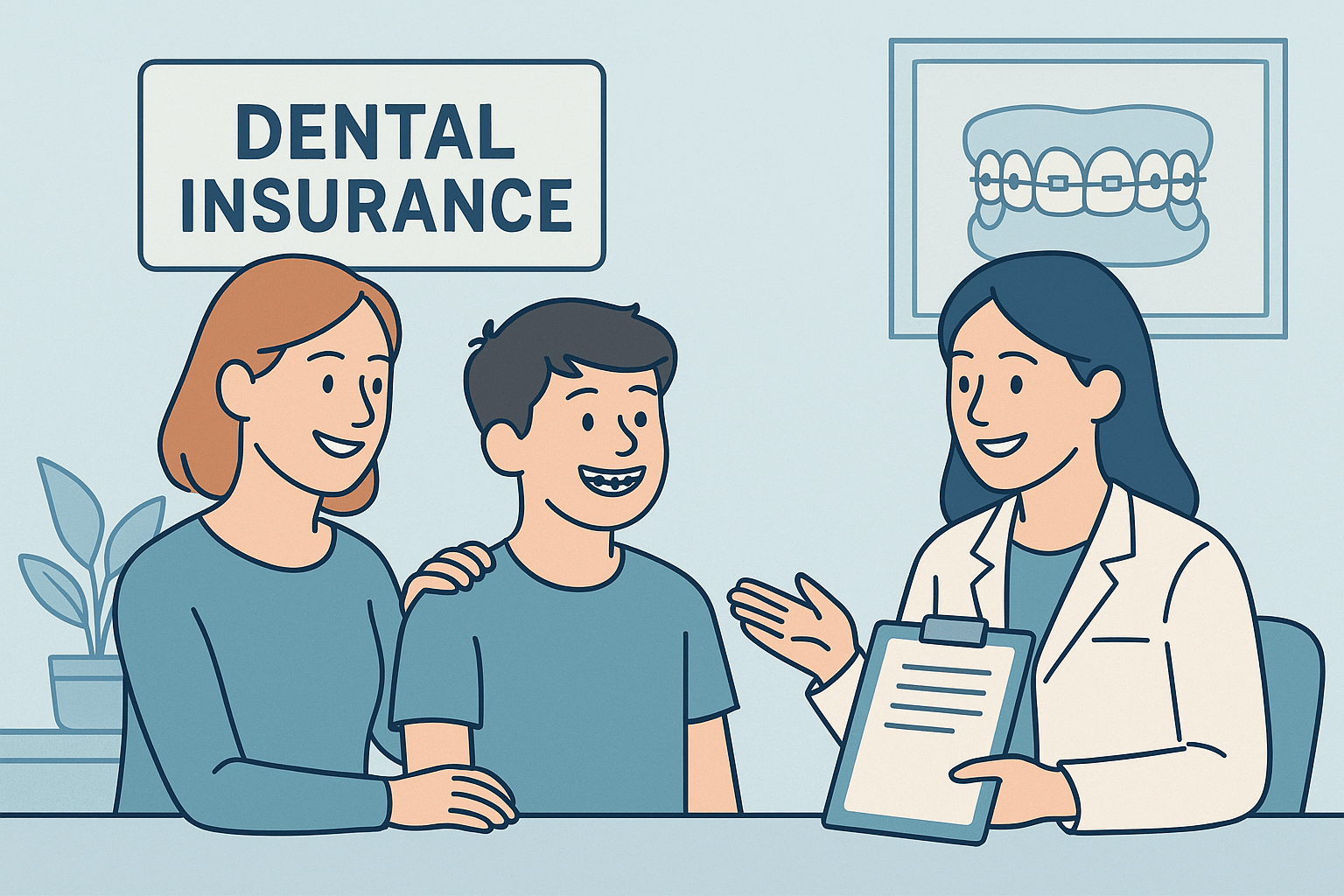Understanding Dental Insurance for Braces
Braces can make a lasting difference in a person’s smile, confidence, and oral health. For many Canadian families and adults, orthodontic treatment is one of the largest out-of-pocket dental expenses they will face.
Dental insurance that includes orthodontic coverage can make this care much more affordable. Not all dental plans include braces, but the right coverage can help reduce the cost significantly for both children and adults.
Aeva makes it easy to compare dental insurance plans in Canada that include orthodontic benefits so that you can find one that fits your needs and budget.
How Orthodontic Coverage Works
Orthodontic coverage is a specialized component within certain dental insurance plans. It helps pay for treatments that correct misaligned teeth and jaws, such as braces, retainers, and clear aligners.
Here are the key coverage features to understand:
These benefits are typically calculated per person, which is helpful for parents with multiple children who may each require treatment at different times.
Example Orthodontic Coverage from Canadian Carriers
To give you an idea of how different carriers structure orthodontic coverage, here is a comparison of sample plans.
These examples are for illustration only and will vary depending on the insurer and province.
The Cost of Braces in Canada
The cost of braces in Canada generally ranges between $3,000 and $7,000, depending on factors such as:
- The type of braces or aligners used
- The complexity of the dental correction required
- The duration of treatment
Even with insurance, patients typically pay a portion out of pocket, but orthodontic benefits can still reduce costs by several thousand dollars.
Scenario Without Insurance With 50% Coverage & $2,000 Lifetime Maximum
Family Dental Plans with Orthodontic Benefits
For parents, family dental plans are the most efficient way to access orthodontic coverage for children.
Key benefits include:
- Dependent coverage: Children are typically eligible for orthodontic benefits until age 18 or 21, depending on the plan.
- Comprehensive care: Family dental plans combine preventive, basic, and orthodontic services under one umbrella.
- Cost efficiency: Coverage for a family can cost less per person than coverage for a single person.
If you expect your child will need braces, enrolling in a plan early ensures that the waiting period is satisfied by the time treatment begins.
Dental Insurance for Adults Who Need Braces
More adults are choosing orthodontic treatment for both cosmetic and functional reasons. Many dental insurance plans recognize this and include orthodontic coverage for adults, especially under enhanced or comprehensive options.
Adult orthodontic benefits typically have:
- The same reimbursement percentage as child coverage (50% to 60%)
- The same lifetime maximum limits ($1,250 to $2,500)
- The same pre-authorization and waiting period requirements
- While adults can expect to pay a portion of the total cost out of pocket, having insurance can still offset several thousand dollars of treatment costs.
For example, an adult with a plan that covers 50% of orthodontic expenses up to a $2,000 lifetime maximum could reduce a $6,000 treatment to $4,000 out of pocket.
What to Look for When Choosing a Dental Plan for Braces
When comparing dental plans that include orthodontic benefits, these are the key details to review:
How to Get Dental Insurance for Braces in Canada
If your current dental insurance does not include orthodontic coverage, you still have options.
- Review your current plan: Check whether orthodontics are covered under “major dental.”
- Upgrade your plan: Some insurers allow members to move to a higher coverage level that includes braces - however medical underwriting may be required.
- Explore private dental insurance: Use Aeva.ca to compare multiple providers and plans side by side.
- Plan ahead: Because most orthodontic benefits have a waiting period, consider enrolling well before treatment begins.
You can compare dental insurance plans on Aeva.ca to find orthodontic coverage that fits your family’s needs and budget.
Dental Insurance and Taxes
In Canada, orthodontic expenses qualify for the Medical Expense Tax Credit (METC), a non-refundable federal tax credit administered by the Canada Revenue Agency (CRA). The METC helps offset the cost of eligible medical and dental expenses for you, your spouse or common-law partner, and your dependents.
You can claim:
- The portion of orthodontic treatment costs (such as braces, consultations, and retainers) not reimbursed by your insurance plan.
- The health and dental insurance premiums you paid personally for a private plan that provides medical, dental, or orthodontic coverage.
To qualify, your total eligible medical expenses must exceed the lesser of 3% of your net income or a fixed dollar amount set annually by the CRA.
This means that if you pay for your own dental insurance plan (for example, one that includes orthodontic coverage) and later pay out-of-pocket for part of your child’s braces, you can claim both the insurance premiums and the unreimbursed portion of orthodontic expenses under the METC.
Always retain detailed receipts and payment records, including insurance statements showing what portion of orthodontic costs was covered or denied. If you and your spouse or dependents have medical expenses, combining them on a single return often maximizes the available tax credit.
Frequently Asked Questions
- At what age does orthodontic coverage begin? Most plans cover preventive and interceptive orthodontic treatment starting around age 7.
- Are habit-breaking appliances covered? Yes, but coverage is often limited to children under about age 13.
- Is orthodontic coverage available for adults? Yes. Many enhanced or comprehensive dental plans include orthodontic benefits for adults with no upper age restriction.
- Is there a waiting period before coverage starts? Yes. Most plans require 2 to 3 years of continuous enrollment before orthodontic benefits apply.
- Are clear aligners such as Invisalign covered? Yes, if the plan classifies aligners as orthodontic treatment. Always confirm before beginning treatment.
- Can orthodontic treatment be financed? Many orthodontists offer payment plans that allow patients to pay monthly over the course of treatment.
The Bottom Line
Braces are an important investment in long-term oral health, but they can be costly without proper coverage. Dental insurance plans that include orthodontic benefits can make this investment far more affordable for both parents and adults.
Aeva makes it simple to compare Canada’s leading dental insurance plans in one place. Whether you are planning for your child’s braces or considering orthodontic treatment yourself, you can easily find the plan that best fits your needs.
Compare dental insurance plans now at Aeva.ca and find the right orthodontic coverage for you and your family.
Subscribe to our newsletter
Join our exclusive mailing list and get the latest stories from the Aeva team



%20(2)-min.png)